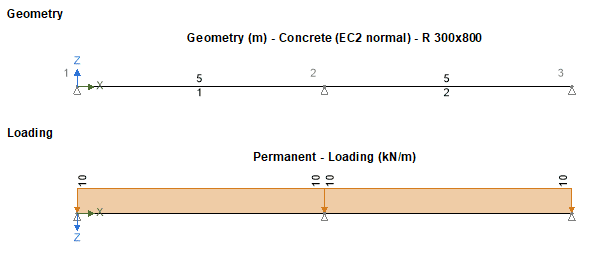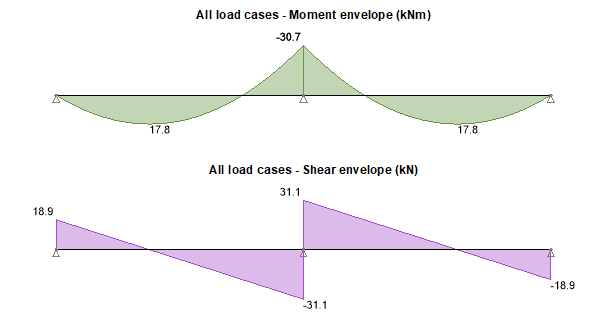simples123
Structural
- Apr 15, 2019
- 3
I've often used this site for advice but this is my first time posting here! I'd like to hear your take on a debate a friend and I have had regarding shear at the intermediate support of a continuous beam.
The argument is about whether one should design the shear at the central support of a continuous beam for the total reaction under the support or for the maximum shear calculated from the shear diagram.
By way of example see the attached images. A beam consisting of 2no. 5m spans, all supports pinned. 10kN/m UDL applied to the beam (RC beam 300x800mm deep). Based on this the shear force is +/- 31.1kN at the intermediate support. The total reaction at this support is 62.2kN. Should the beam be designed for an applied shear of 31.1kN or 62.2kN?


The argument is about whether one should design the shear at the central support of a continuous beam for the total reaction under the support or for the maximum shear calculated from the shear diagram.
By way of example see the attached images. A beam consisting of 2no. 5m spans, all supports pinned. 10kN/m UDL applied to the beam (RC beam 300x800mm deep). Based on this the shear force is +/- 31.1kN at the intermediate support. The total reaction at this support is 62.2kN. Should the beam be designed for an applied shear of 31.1kN or 62.2kN?


